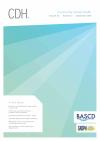Community Dental Health

- Cover Date:
- September 2018
- Print ISSN:
- 0265 539X
- Electronic ISSN:
- 2515-1746
- Vol:
- 35
- Issue:
- 3
The relationships among consumption of fruits, tooth loss and obesity
Objective: to explore whether consumption of fruits attenuates the relationship between tooth loss and obesity among adult Americans. Basic research design: data from the Behavioral Risk Factor Surveillance System 2012, a cross-sectional survey. Participants: 20,103 adults aged 18 and over who participated in the Behavioral Risk Factor Surveillance System 2012, a nationally representative survey of non-institutionalized adult American. Main outcome measures: Obesity (Body Mass Index ≥ 30 kg/m2). Logistic regression analysis was used to assess the association between obesity and number of missing teeth adjusting for consumption of fruits socio-demographic factors, physical activity, diabetes and self-rated general health. Results: The prevalence of obesity was higher among adults with > 6 missing teeth and among those with fruit intakes less than once a day. Individuals with > 6 missing teeth were at higher risk of obesity with odds ratios 1.25 (95% CI: 1.04, 1.50), the relationship attenuated after adjusting for fruit consumption. Conclusions: Frequent consumption of fruits was inversely associated with each of obesity and number of missing teeth. The findings imply a mediating role of fruit consumption in the relationship between tooth loss and obesity.
Key words: Adult, fruit, obesity, tooth loss
© BASCD 2018
doi:10.1922/CDH_4235Chari05
- Article Price
- £15.00
- Institution Article Price
- £
- Page Start
- 148
- Page End
- 152
- Authors
- Malini Chari, Wael Sabbah
Articles from this issue
- Title
- Pg. Start
- Pg. End
- Dental Public Health In Action: Barriers to oral healthcare provision for older people in residential and nursing care homes: A mixed method evaluation and strategy development in County Durham, North East England
- 136
- 139
- Confirmatory factor analysis of the health literacy in dentistry scale (HeLD) in the Australian population
- 140
- 147
- Patients’ willingness to pay for dental services in a population with limited restorative services
- 167
- 172
- Oral health behaviours and oral health-related dietary behaviours: The interrelationship and determinants by latent class analysis
- 173
- 178
- Depressive symptoms and untreated coronal dental caries among adults ages 21-64 years, NHANES 2013-2014
- 179
- 185
